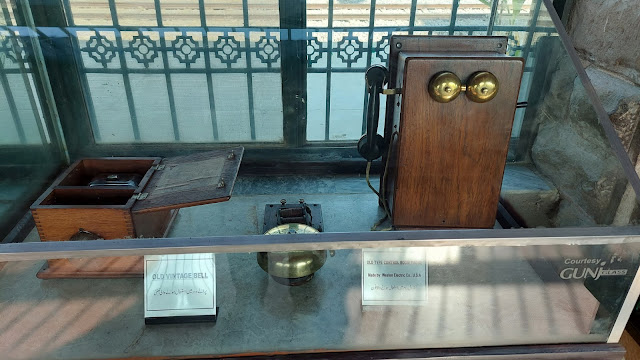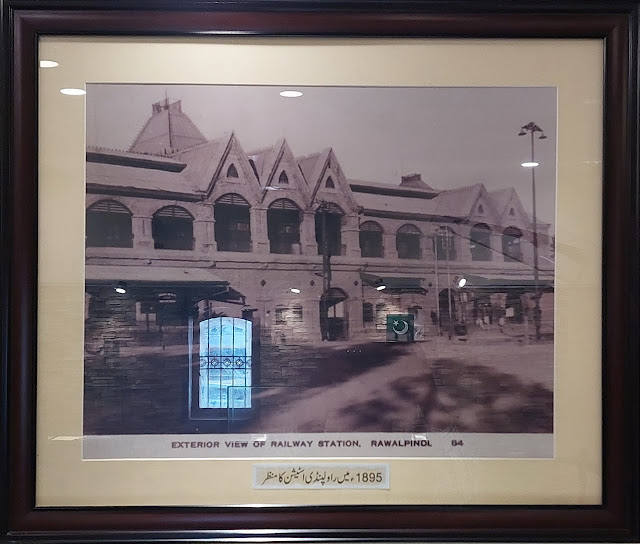The Industrial Revolution, which started in England in the late eighteenth century, is a fascinating episode in human history. Within a few decades, it caused more changes in the world than had been witnessed in the previous many centuries, or perhaps even millennia. Many new machines were invented during the next half-century. Among the most revolutionary was definitely the steam engine. It was applied widely, from coal mines to huge textile mills. George Stephenson, a famous inventor, applied this new technology to improve means of transportation and, after many prototypes and trials, finally built the first successful railway engine in 1829, which literally revolutionized transportation all over the world within a few decades.
By the mid-nineteenth century, the British had completed the conquest of India and, to boost economic activity, they introduced railways to India. The first railway line, from Mumbai to Thane, was opened on 16 April 1853. It ran for just 34 kilometers. However, the subsequent progress was astonishingly fast. By the end of the nineteenth century, the vast Indian peninsula was connected from east to west and north to south with a huge network of railways. Not surprisingly, establishing railways is counted among the biggest achievements of British rule in India.
In 1855, several companies started laying railway tracks in Punjab and Sindh. These companies were later merged and formed the North Western Railway (NWR) in 1886. The speed at which these gigantic railway projects were completed can be gauged from the fact that by the 1890s, all the major cities of present-day Pakistan, from Karachi to Lahore to Peshawar, were connected through railways. Even the far-flung Quetta was linked to the network by laying railway tracks over formidable terrain.
At the time of independence, most of the NWR infrastructure fell within Pakistan and was renamed Pakistan Western Railway, as the country was then called West Pakistan. Subsequently, after the separation of East Pakistan, it became simply Pakistan Railways. This is the historical background of Pakistan Railways. I shall not dwell further on the history of railways and, without further delay, take you to Golra Railway Station, where there is so much history to see, learn, and enjoy.
Golra Railway Station was established in 1886 and is located in the western suburbs of Islamabad. In my opinion, it can easily be counted among the most interesting tourist spots in Islamabad. It is located at 33°40'13.6"N, 72°56'52.2"E. A visit to this place had been on my mind for a long time. Finally, on 14 November 2021, I reached there and found the place as interesting and pleasant as I had expected. There is so much to see that I think words alone cannot do it justice.
An old steam engine, one of many attractions at the Railway Station. Built in 1930.
The railway station has many attractions. Three beautifully restored steam engines are displayed in the open for everyone to see and appreciate. These are marvelous machines, and you can observe them in almost their original condition. The small, charming building of the railway station itself is a fine example of nineteenth-century architecture. The station is still fully functional, and since it lies on the main Lahore–Peshawar line, it regularly receives trains.
The building of the Golra Railway Station, constructed in 1886.
A view of the platform.
Railway tracks.
Campbell Johnstone, London, 1872. Contractors.
Clock.
Big lush green trees add to the beauty of the railway station and the serenity of the surroundings. Planted around 1880.
A view of Gallery 1 of the museum.
A passenger, waiting for his train.
At the platform.
Golra Sharif Junction. The mausoleum of Pir Mehr Ali Shah is located in a nearby village Golra. Hence the village is called Sharif (noble, honourable).
A train approaching from the direction of Attock.
Another beautiful view of the Golra Railway Station.
At the railway station, three locomotives and a number of carriages are on display. These brightly painted engines and carriages are the main attractions of this museum. You can truly appreciate these marvels of old mechanical engineering in their original settings. In addition, there are two light cranes and several other tools, such as an electric generator, track-changing levers, and more.
Freshly painted locomotives look even more beautiful in this beautiful setting.
A locomotive, probably built in 1937.
In front of the locomotive. The Gallery 2 of the museum can be seen on the right side.
The second locomotive, parked under the trees.
Another view of the above locomotive.
Control room of the locomotive.
A Sleeper of PR, Pakistan Railways.
Perhaps guard's room.
A handpump for water.
A cargo carriage. (14.11.2021.)
Inspection Car, Pakistan Railways.
Postal Van, NWR.
Levers to change the tracks.
Railway signals.
The third locomotive on display.
Front view of the locomotive.
A man waiting for his train.
A model of a diesel engine locomotive.
Electric power generator.
Weight machine.
A carriage to transport horses and ponies.
A carriage.
A crane.
Another light crane. (14.11.2021.)
Engine driver's room.
There are two galleries in this museum. In Gallery 1, mostly heavy mechanical devices and communication equipment are on display. It is a good opportunity for people with an interest in mechanical engineering, especially in older technologies.
Entrance of the Gallery 1.
The Gallery 1.
A lamp.
Probably a counting machine.
Station Master's Hat and two gadgets.
Rifles of the railway guards.
The C.S Bell Co. 22 Hillsboro.O.
KILOWATT HOUR METER
Used for monitoring energy consumption in a range of environments.
Manufactured by: Ferranti, England
ELECTRIC METER
Different kinds of meters used in Railway System
Kerosene oil heater, also used as a stove. Was used by Viceroy Lord Mountbatten during travel.
 A few tools.
A few tools. Tools.
A scale model of a locomotive.
Tool Boxes.
Surgery tools.
Electric tubes.
DC Fans.
Heaters
Wireless communication system.
OLD TYPE CONTROL ROOM PHONE
Manufactured By: Western Electric Co. USA
MORSE CODE
Different types of lamps.
A searchlight, powered by kerosene oil, was used during track repairs in 1930.
A model of a railway tunnel.
Tariq Amir
A telephone set.
Kerosene Lights
A combination machine was used at the Khem Karan railway station to communicate with Gharyala railway station. Now both in Indian Punjab.
Gallery 2 of the museum is actually larger than Gallery 1. It mostly displays lighter items and focuses more on the cultural and social aspects of traveling by train in the pre-independence days. Dozens of interesting items are aesthetically arranged in a large, well-lit hall.
Gallery 2.
Inside view of Gallery 2.
Many interesting and valuable articles are very nicely displayed.
Some historic pictures are also part of the collection.
A tea stall.
Rates and even benefits of drinking tea are on display in Urdu, Punjabi, Hindi and Bengali.
A porter
A model of Khojak Pass, Balochistan.
A Waiting Room at a railway station.
A railway guard in uniform.
A model of the historic Lahore Railway Station.
History of the Wheel.
A small scale model of a railway carriage.
A light, used for signalling.
Kerosene Pole Signal Light
Feuerhand Hurricane Lantern. Made in Germany.
Kerosene Office Table Lamp
Lantern
Brass Table Lamp
Made by Noor, brand 570 King, North Western Railway
Tail Lamp
Hand Signal Lamp
Lantern - Made By: Dietz, Fitzall, New York, USA.
Gate Lamp
Stamps and Stamp Pads
Letter Cover (1962)
Postal Stamps (1930) and postal weighing scale and weights.
Postal Bag
Badges of Railway Staff
Official Documents of North Western Railway
Gang Man Tools
Rail Tongue: Used in relief trains to lift the track
Pakistan Railway Crockery, used in 1970s
Brass Tea Kettle and Rolling Ping & Board
Tools
Brass Jug & Brass Water Ladle
Drinking Vessels
Diesel Engine
Screw Guage
Carpenter's Set
Theodolite: Theodolite is a precision instrument used for measuring angles both horizontally and vertically. Made by: Wottway and Co. Ltd. London.
Engineering Tools
Date Punching Machine
Eagle Engine Model 1869 - Earliest steam locomotive of this region
COMPTOMETER
The comptometer was invented by American Dorr Eugene Felt and was patented in 1887. Manufactured by the Felt and Tarrant manufacturing company of Chicago, USA. It was the first truly practical and commercially successful adding machine. This comptometer was used in Lahore station.
Lee Enfield Gun
Quaid -e- Azam adressing railway officials in Karachi, 1947.
A bridge at Sohawa, 1860.
Lahore Railway Station 1886.
A view of the river Indus.
Rawalpindi Railway Station, before independence.
Rawalpindi Railway Station 1895.
Railway Institute Quetta 1890.
Burt Railway Institute, Lahore, 1914.
Amritsar Railway Station. People migrating through railways in 1947.
Migration by railways,
Abida Tusi. First civilian casualty of the 1965 war. She was travelling by train when the train came under Indian Air Force attack at Dhaunkal Railway Station, near Wazirabad, on 6 September 1965.
A poster published by British India's North Western Railway in 1930.
Eagle Engine. At the display in front of the office of the Divisional Superintendent (workshop), Lahore.
A train moving towards Queeta, before independence.
Testing Attock Bridge, 30th August, 1929.
Boat bridge on the river Indus, at Attock, 1885.
Indus Flotilla Paddle-Steamer, opposite Kotri 1927.
Lahore Railway Station, 1880.
Arrival of the Governor General of India at Lahore Railway Station.
Narrow Guage Train before the creation of Pakistan.
Viceroy's train passing through the Khojak Pass
This place has all the ingredients to make a place worth visiting. It is an interesting place with pleasant and peaceful surroundings. There are many things to see and a lot to learn. An additional advantage of this place is its location. Being just a few kilometers away from the city centre, it is easily accessible. It is simply a full package of enjoyment and learning.
Tariq Amir
November 26, 2021.
Islamabad
For related posts, visit:




































































































































